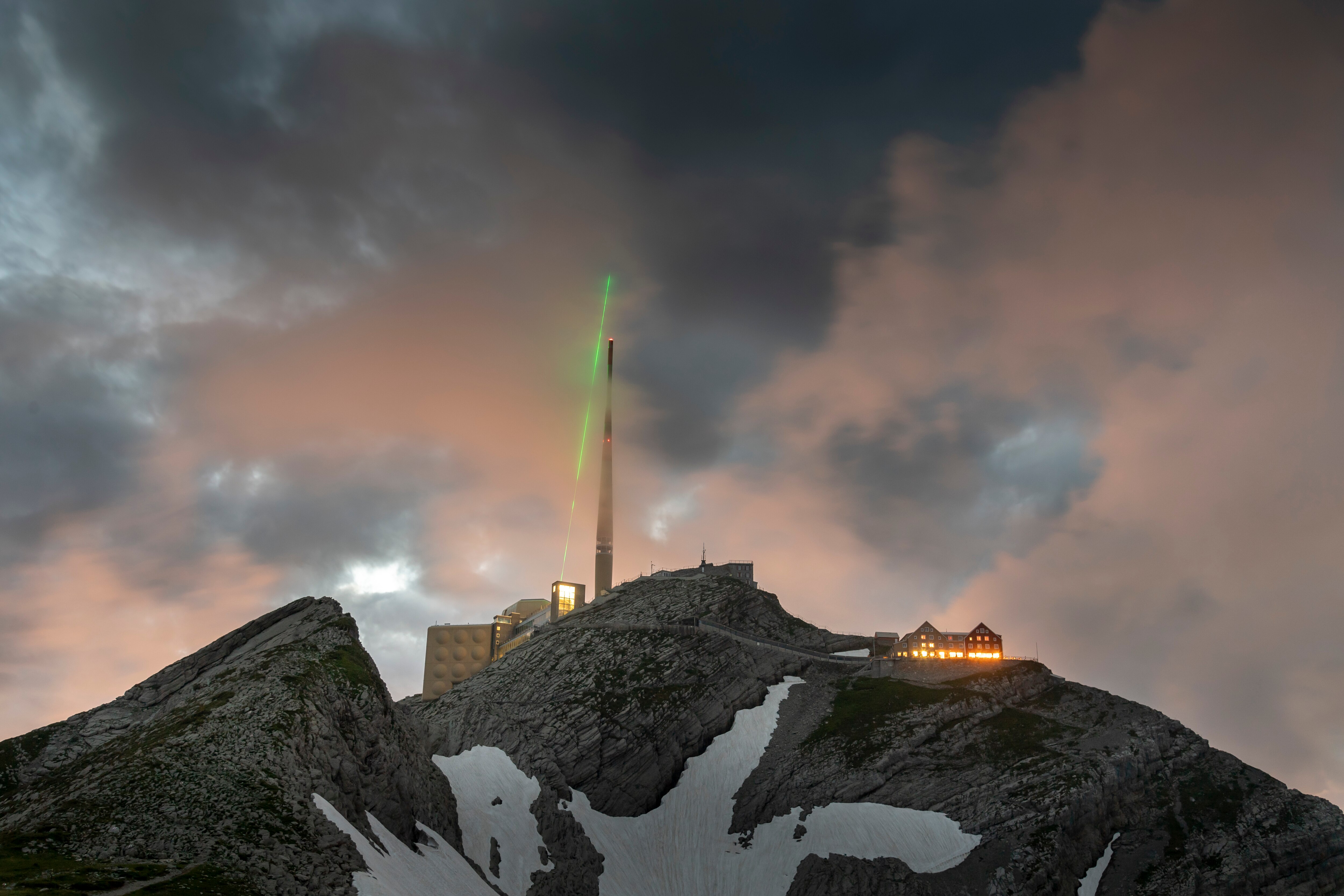For the first time, scientists have managed to deflect lightning, to the relief of anyone afraid of thunder and lightning storms but probably the chagrin of Zeus. They managed to show that lasers can act as virtual lightning rods, redirecting the direction in which bolts jump.
The Franklin lightning rod was a major scientific advance of its day, preventing millions of fires and electrocutions and demonstrating humanity’s capacity to control forces we had long feared as belonging to the gods. Nevertheless, it’s been 270 years, and it remains the basis of our lightning protection: maybe it’s time for an upgrade.
That is what Dr Aurélien Houard of ENSTA Paris and co-authors propose in a paper pubpished in Nature Photonics, demonstrating that laser pulses can change the direction of a lightning strike.
The team previously demonstrated lasers’ capacity to ionize air in laboratories can cause 2-million-volt sparks to jump along low-density channels. To take their idea to a larger stage, they placed a laser machine the size of a car near a tower on Säntis Mountain, Switzerland. The tower was chosen as, contrary to sayings about lightning never striking twice in the same place, it gets hit about 100 times a year – reportedly the most in Europe.

The lightning rod in action: a green laser shoots into the sky next to a lightning rod ready to divert the lightning bolt
Image credit: TRUMPF/Martin Stollberg
During a six-hour storm, the laser pulses controlled the direction of four lightning discharges. One of the bolts, occurring under relatively clear skies, was recorded using two high-speed cameras. This showed it followed the laser beams’ path for at least 50 meters (164 feet). All were accompanied by increased X-Ray bursts.
“Although this research field has been very active for more than 20 years, this is the first field-result that experimentally demonstrates lightning guided by lasers,” the authors write. Two previous attempts to achieve something similar failed. The authors attribute their success to using much faster laser pulses, repeated on a scale of a thousand times a second.
While unquestionably cool, one may ask if this technique is all that practical. A laser like this will probably always be expensive to make and operate. Meanwhile, the telecommunications tower in question is still standing after all these years because its Franklin rod works extremely well on its own.
It’s certainly true that lightning guidance will not come cheap. It took the team three years to build their machine and its power was in the terawatt range, admittedly for a very short amount of time. This is more than the entire electricity consumption of Europe.
However, there are times when more than stationary rods are required, such as when people need to be moving around in an open field. Rockets with wire attached have been shown to trigger lightning, defusing strong electric fields, that could have led to subsequent strikes. However, the rockets are single-use and therefore possibly more expensive in the long run than lasers, which the authors argue could also protect vital stationary infrastructure better than Franklin rods.
Contrary to how we might imagine the process, the lightning all started at the top of the tower, with their upward path laser controlled, rather than a bolt from the heavens redirected to a different spot on the ground.
Also very useful if you want to power a time machine to get back to the future.
A version of this article was first published in January 2023.
Source Link: For The First Time Ever, Humans Have Bent Lightning